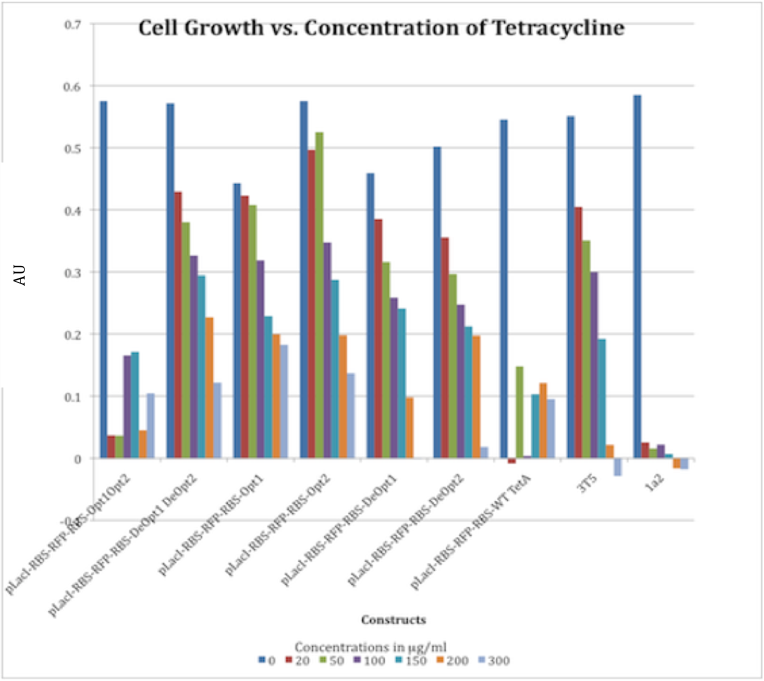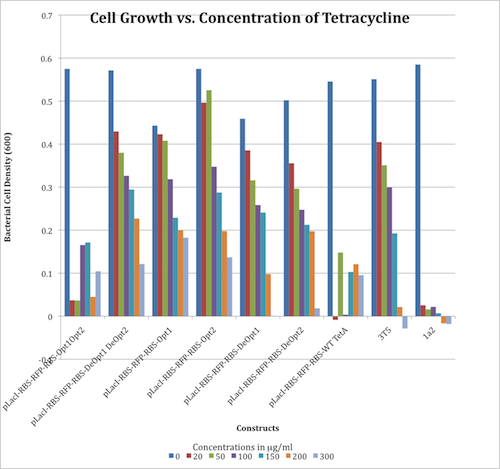Team:Davidson-MissouriW/OptimizingCodons
From 2010.igem.org
Contents |
Optimizing Codons
Introduction
Creating Optimized and Deoptimized TetA
RFLP (Restriction Length Fragment Polymorphism)
We used restriction fragment length polymorphism (RFLP) as a way to screen our candidate clones for our optimized and deoptimized versions of the TetA gene. RFLP is a laboratory technique whereby DNA is digested by restriction enzymes and the resulting DNA fragments are separated by gel electrophoresis. RFLP relies on a difference between two or more samples of homologous DNA molecules arising from differing locations of restriction sites. Using the program NEBcutter V2[http://tools.neb.com/NEBcutter2/] from New England Biolabs, we were able to determine which restriction enzymes to use to screen for our various TetA candidate clones. Based on availability of restriction enzymes and the greatest variability of bands created, we choose four different restriction enzymes for the custom digestion of our candidate clones: Optimized segment 1→ HinFI Deoptimized segment 2→ DdeI Optimized segment 2→ BsaWI Deoptimized segment 2→ AccI Using RFLP, we screened our clones and sent strong candidate clones, the ones that had diagnostic bands indicative of the desired clone, off for sequencing. After analyzing the sequencing data, we were able to conclude that RFLP is an excellent method for screening for clones, given that almost all of the clones sent off were correct.
 "
"

